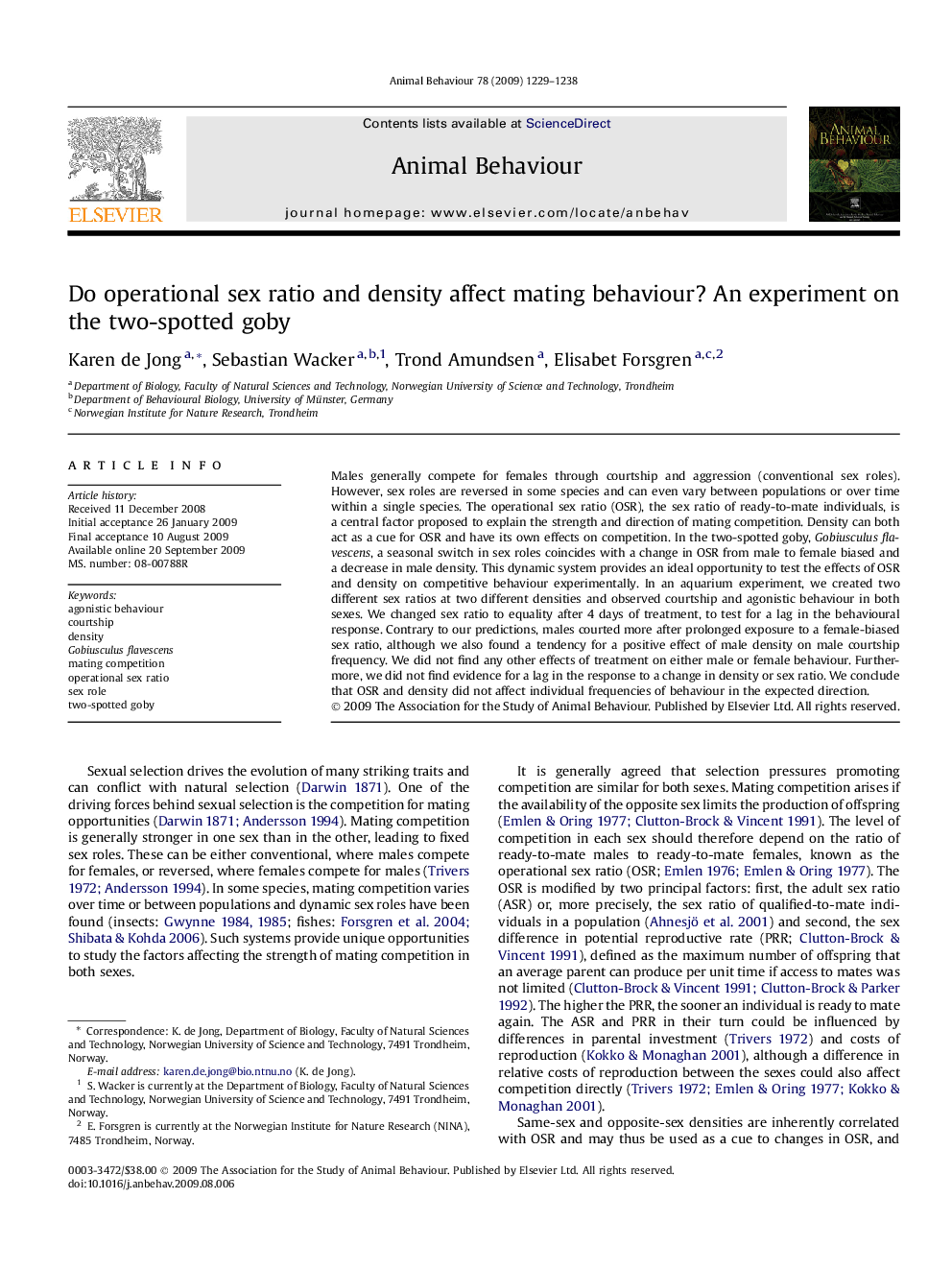| کد مقاله | کد نشریه | سال انتشار | مقاله انگلیسی | نسخه تمام متن |
|---|---|---|---|---|
| 2417806 | 1104328 | 2009 | 10 صفحه PDF | دانلود رایگان |

Males generally compete for females through courtship and aggression (conventional sex roles). However, sex roles are reversed in some species and can even vary between populations or over time within a single species. The operational sex ratio (OSR), the sex ratio of ready-to-mate individuals, is a central factor proposed to explain the strength and direction of mating competition. Density can both act as a cue for OSR and have its own effects on competition. In the two-spotted goby, Gobiusculus flavescens, a seasonal switch in sex roles coincides with a change in OSR from male to female biased and a decrease in male density. This dynamic system provides an ideal opportunity to test the effects of OSR and density on competitive behaviour experimentally. In an aquarium experiment, we created two different sex ratios at two different densities and observed courtship and agonistic behaviour in both sexes. We changed sex ratio to equality after 4 days of treatment, to test for a lag in the behavioural response. Contrary to our predictions, males courted more after prolonged exposure to a female-biased sex ratio, although we also found a tendency for a positive effect of male density on male courtship frequency. We did not find any other effects of treatment on either male or female behaviour. Furthermore, we did not find evidence for a lag in the response to a change in density or sex ratio. We conclude that OSR and density did not affect individual frequencies of behaviour in the expected direction.
Journal: Animal Behaviour - Volume 78, Issue 5, November 2009, Pages 1229–1238